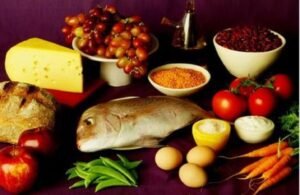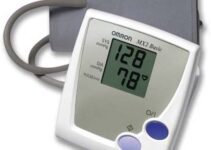Your blood pressure is the force exerted on your artery walls by the blood flowing through your body. A blood pressure reading provides two measures, systolic pressure and diastolic pressure, which are expressed as millimeters of mercury (mm Hg), or how high the pressure of blood would raise a column of mercury.
Systolic pressure is measured as the heart pumps. Diastolic pressure is measured between beats, as blood flows back into the heart.
Two centuries have passed since the first measurement of blood pressure and medical world still lacks a general opinion to normal blood pressure.
 However, experts WHO (World Health Organization) consider for people under 60 years old:
However, experts WHO (World Health Organization) consider for people under 60 years old:
- Normal blood values under 14/9
- Abnormal (hypertension) upper 16/9.5.
Hypertension (high blood pressure) affects one in four adults in the United States. Another 25 percent of adults have blood pressure readings considered to be on the high end of normal.
Numerous studies have shown that hypertension is hereditary, so you have to pay full attention when you have family cases but people with obesity have two to six times more often hypertension than those with normal weight. High blood pressure is often called the “silent killer” because it has no symptoms and can go undetected for years. It is important to have your blood pressure checked regularly.
Once you have been diagnosed with hypertension, most specialists will prescribe you medication needed to keep blood pressure under control. But a diet suitable for this problem sometimes can help enormously in stabilizing blood pressure.
What is characteristic for blood pressure diet?
- Low sodium (salt);
- Low in saturated fat and cholesterol;
- Rich in antioxidants and vitamins;
- Rich in potassium and magnesium.
The most important thing is to limit consumption of those foods that cause an increase in blood pressure. Hypertensive patient should avoid all the habits and activities that can harm: the abuse of coffee, alcohol, cigarettes, copious meals (high in fat), sweets, spices, salt, excessive physical and sexual efforts, taking aphrodisiacs (Viagra), prolonged exposure to sunlight, hot baths, cold, excessive abuse of drugs (following rule: “I heard that is good”).
 Attention: Reducing salt intake in food is an important measure in treating high blood pressure.
Attention: Reducing salt intake in food is an important measure in treating high blood pressure.
It is said that “it is easier to prevent than to cure”, so even if you do not currently deal with this health problem is still recommended to follow this diet.
1. Recommended Foods:
 Usually, all vegetables and fruits are shown, being low in fat, cholesterol and sodium. However, most nutritious in this case are rich in magnesium and potassium (two minerals that lower blood pressure), such as: apricots; grapes; grains; figs; dried fruit; potatoes; unsalted oilseeds; avocado; bananas; black beans; broccoli; unsalted nuts; soy milk; spinach.
Usually, all vegetables and fruits are shown, being low in fat, cholesterol and sodium. However, most nutritious in this case are rich in magnesium and potassium (two minerals that lower blood pressure), such as: apricots; grapes; grains; figs; dried fruit; potatoes; unsalted oilseeds; avocado; bananas; black beans; broccoli; unsalted nuts; soy milk; spinach.
Besides fruits and vegetables you may eat: yogurt; skim milk; cheese; biscuits; chicken; lean pork; canned tuna; canned salmon; unsalted seeds; dry beans; lentils; pepper; lemon juice; pickles without salt; garlic and onion.
Cold water fish rich in omega 3: salmon; tuna; herring; mackerel.
2. Forbidden Foods:
Cream cheese; frozen or canned vegetables; chips; popcorn; tortillas; pastries; processed meat; smoked meat; hot dogs; sausages; ham; regular ketchup; salt mustard; very salty pickles.
It is very important to eat healthy and a balanced diet makes a difference. Studies have shown diet and weight play a major role in the onset and development of the disease and a healthy diet and eliminating excess pounds are important measures for reducing blood pressure.



